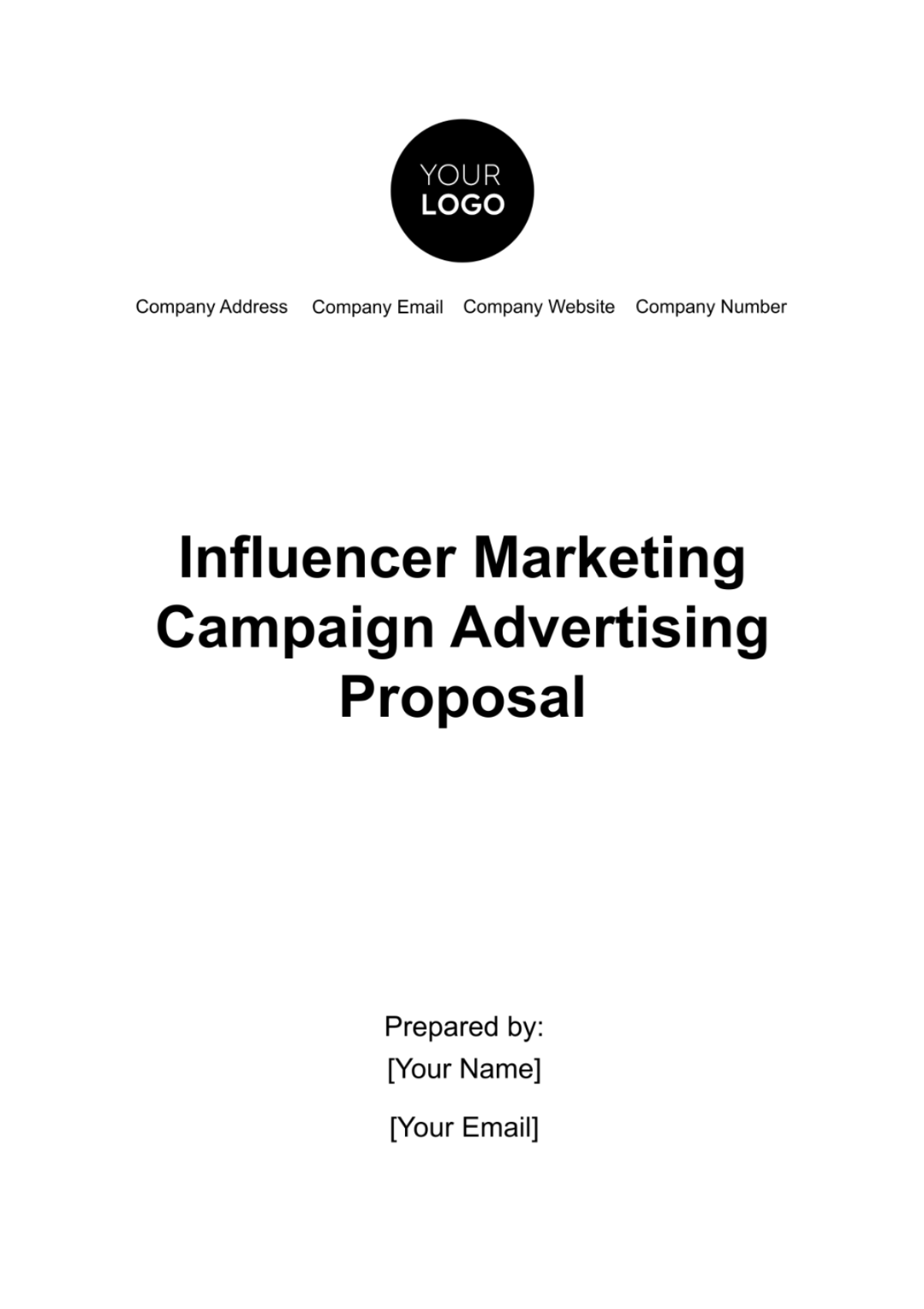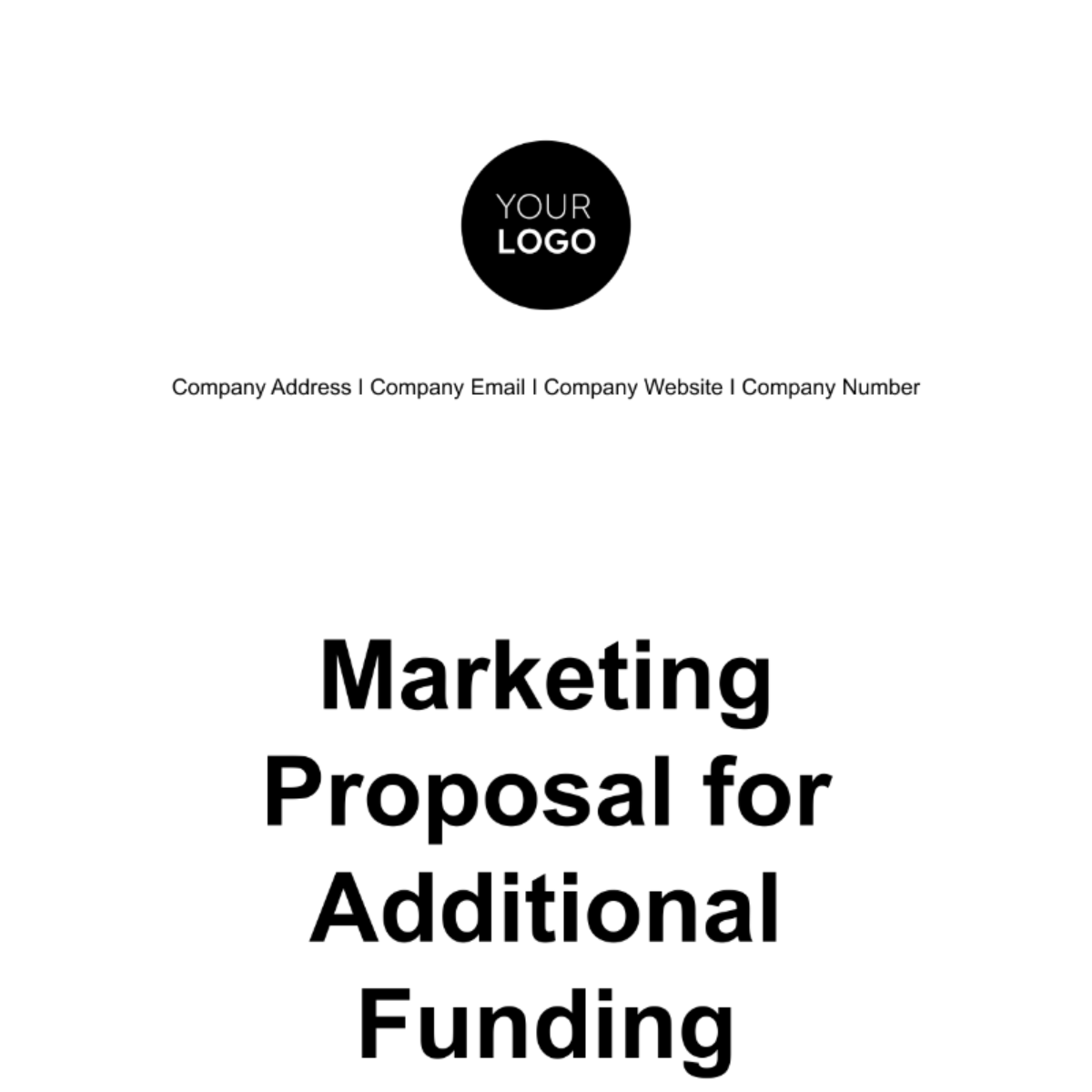Simple Marketing Proposal
I. Executive Summary
A. Overview of the Proposal
This proposal presents a comprehensive marketing strategy for [Your Company Name]’s new product line, aiming to enhance brand recognition and increase sales. By leveraging a multi-channel approach, we plan to capitalize on emerging trends and target key demographics effectively. The proposal outlines detailed market analysis, strategic recommendations, and expected outcomes to ensure a successful campaign.
B. Summary of Objectives
Our primary goals are to boost brand awareness by [00]% and achieve a [00]% increase in online sales within the next six months. We aim to enhance customer engagement through tailored marketing efforts and optimize digital presence across various platforms. These objectives will be supported by specific, measurable actions and monitored through key performance indicators.
C. Key Recommendations
Implement a multi-channel digital marketing strategy encompassing social media, SEO, and email campaigns to drive traffic and conversions.
Develop a content marketing plan that highlights the unique features of the product and engages potential customers with relevant, high-quality content.
Allocate budget towards targeted online advertisements to reach specific customer segments and maximize ROI.
D. Expected Outcomes
The proposed strategies are anticipated to increase website traffic significantly, leading to higher conversion rates and sales growth. Enhanced brand visibility will position [Your Company Name] as a leader in its industry, attracting new customers and retaining existing ones. Overall, the campaign aims to deliver a strong return on investment and solidify market presence.
II. Situation Analysis
A. Market Overview
Industry Trends
The marketing industry is shifting towards digital platforms, with a growing emphasis on personalized and data-driven strategies. Social media and search engine marketing are becoming increasingly important for reaching target audiences and influencing purchasing decisions. Additionally, there is a rising demand for innovative and interactive content that engages consumers on a deeper level.
Market Size and Growth
The market for [Your Company Name]’s products is experiencing robust growth, projected to increase by [00]% annually due to rising consumer interest in high-quality and innovative solutions. This growth is driven by technological advancements and changing consumer preferences towards convenience and efficiency. Capitalizing on these trends will be crucial for capturing market share and achieving sales targets.
B. Competitive Analysis
Key Competitors
[Your Company Name] faces competition from major players like [Competitor A] and [Competitor B], both of which have established strong brand identities and extensive market reach. These competitors have significant resources and experience, allowing them to maintain a dominant position in the market. Understanding their strategies will help in positioning [Your Company Name]’s offerings more effectively.
Competitor Strengths and Weaknesses
Competitors excel in brand recognition and customer loyalty, often leveraging extensive advertising budgets and established distribution channels. However, they may lack the flexibility and personalized approach that [Your Company Name] can offer. By capitalizing on these weaknesses, [Your Company Name] can differentiate itself and attract customers seeking more tailored solutions.
C. SWOT Analysis
Strengths
[Your Company Name]’s commitment to product innovation positions it as a leader in offering cutting-edge solutions.
The company benefits from a well-established distribution network, ensuring efficient product availability and delivery.
Strong internal capabilities and a skilled marketing team provide a solid foundation for executing successful campaigns.
Weaknesses
Limited brand awareness compared to industry leaders may hinder initial market penetration and consumer trust.
Dependence on traditional marketing methods may reduce the effectiveness of reaching modern, tech-savvy audiences.
Limited resources for large-scale advertising campaigns may restrict the ability to compete with well-funded competitors.
Opportunities
The growing online market presents an opportunity to reach a broader audience through digital marketing initiatives.
Increasing consumer demand for customized products aligns with [Your Company Name]’s strengths in innovation and personalization.
Expanding into emerging markets and leveraging new technologies can drive additional growth and market share.
Threats
Intense competition from established brands may impact market share and pricing strategies.
Economic fluctuations could affect consumer spending power and overall demand for premium products.
Rapid technological changes require continuous adaptation and investment to stay competitive in the market.
III. Target Audience
A. Demographic Profile
The primary target audience includes adults aged 25-45, who are typically professionals and young families. This group is characterized by their high disposable income and interest in high-quality, innovative products. They are likely to be well-educated and tech-savvy, valuing convenience and efficiency.
B. Psychographic Profile
Target customers are motivated by convenience, sustainability, and premium experiences that align with their lifestyle choices. They are active online, follow trends closely, and seek products that enhance their quality of life. This audience values personalized experiences and is influenced by brands that resonate with their personal values.
C. Behavioral Insights
The target audience frequently conducts online research before making purchasing decisions, seeking detailed product information and customer reviews. They are highly influenced by social media endorsements and digital content that addresses their specific needs and interests. Engagement with tailored offers and personalized content is likely to drive conversions and loyalty.
D. Target Segmentation
Segments include
Young Professionals | They are attracted to modern, efficient solutions that enhance their busy lives and support career growth. |
Families | Seeking reliable and high-quality products for daily use, with a focus on durability and value. |
Trendsetters | Early adopters who are keen on the latest innovations and are influential in shaping trends and consumer preferences. |
IV. Marketing Objectives
A. Short-Term Goals
Increase website traffic by [00]% within the first three months through targeted digital campaigns and SEO efforts.
Generate 500 new leads by implementing strategic content marketing and engagement tactics.
Enhance social media engagement by [00]% through interactive content and consistent posting.
B. Long-Term Goals
Achieve a [00]% increase in online sales within six months by optimizing the customer journey and conversion strategies.
Establish a robust social media presence with a [00]% increase in followers, boosting brand visibility and interaction.
Strengthen customer loyalty and retention through personalized marketing initiatives and targeted follow-up campaigns.
C. Key Performance Indicators (KPIs)
Monitor website traffic and track conversion rates to assess the effectiveness of digital marketing strategies.
Evaluate lead generation numbers and analyze the quality of leads to ensure they align with target audience profiles.
Measure social media engagement metrics, including likes, shares, and comments, to gauge the impact of content and campaigns.
V. Marketing Strategies
A. Product/Service Positioning
Position [Your Company Name]s products as innovative solutions that address modern needs with superior quality and functionality. Emphasize unique features that differentiate the products from competitors and highlight benefits that resonate with the target audience. Build a strong brand narrative that connects emotionally with customers and reinforces the product’s value proposition.
B. Branding and Messaging
Develop a cohesive branding strategy that communicates the core values of [Your Company Name] and aligns with the preferences of the target audience. Craft compelling messages that highlight the unique selling points of the products and create a memorable brand identity. Ensure consistency across all marketing channels to build trust and recognition.
C. Marketing Channels
Digital Marketing
SEO | Optimize website content with relevant keywords to improve search engine rankings and attract organic traffic. |
PPC | Run targeted pay-per-click campaigns to drive immediate traffic and reach specific audience segments. |
Social Media | Utilize platforms like Facebook, Instagram, and LinkedIn to engage with potential customers and build brand presence. |
Traditional Marketing
Place ads in industry magazines and local newspapers to reach a broader audience and reinforce brand messaging. | |
Radio/TV | Develop targeted ads for radio and television to capture attention and increase brand visibility during peak times. |
Content Marketing
Blogs | Publish informative and engaging blog posts that address customer pain points and showcase product benefits. |
Videos | Create high-quality product demonstrations and customer testimonials to build credibility and attract interest. |
Email Marketing
Newsletters | Distribute regular newsletters featuring updates, promotions, and valuable content to keep customers informed and engaged. |
Automated Campaigns | Set up automated email sequences based on user behavior to nurture leads and drive conversions. |
D. Promotional Tactics
Sales Promotions
Implement time-limited discounts and bundle offers to create urgency and drive immediate purchases.
Utilize promotional codes and special deals to incentivize customers and boost sales.
Events and Sponsorships
Organize webinars, product launches, and industry events to engage with potential customers and enhance brand visibility.
Sponsor local events and community activities to build goodwill and connect with target audiences in meaningful ways.
Public Relations
Develop press releases and pitch stories to media outlets to generate coverage and increase brand exposure.
Engage with influencers and industry experts to gain endorsements and enhance credibility.
VI. Action Plan
A. Implementation Timeline
Month 1 | Begin by launching the digital marketing campaign, including SEO optimizations, PPC ads, and initial social media content. Start content creation with blog posts, videos, and email templates. Set up tracking mechanisms for performance monitoring. |
Month 2-3 | Continue executing digital marketing strategies, including refining PPC ads and enhancing SEO based on initial results. Begin traditional marketing efforts with print ads and radio/TV spots. Start collecting data and analyzing performance for necessary adjustments. |
Month 4-6 | Conduct a comprehensive review of campaign performance and adjust strategies based on insights gathered. Expand successful tactics and scale up budget allocation for high-performing channels. Prepare for end-of-campaign evaluations and finalize reports. |
B. Key Milestones
Completion of Initial Campaign Setup
Ensure all digital and traditional marketing assets are created and deployed as planned. Complete initial SEO and PPC setups and launch the first batch of content.
Achievement of Traffic and Lead Generation Targets
Monitor progress towards the goal of increasing website traffic by [00]% and generating 500 new leads. Evaluate performance against benchmarks and make necessary adjustments.
Mid-Campaign Review
Conduct a thorough review at the halfway point to assess the effectiveness of marketing strategies and realign efforts based on performance data and feedback.
C. Responsibilities and Assignments
Marketing Team
Oversee the implementation of digital marketing strategies, including content creation, SEO, and social media management. Coordinate with external agencies for traditional marketing efforts and track campaign performance.
Advertising Agency
Manage traditional marketing initiatives, including print, radio, and TV ads. Handle public relations and sponsorships to maximize brand exposure and engagement.
Sales Team
Execute promotional tactics, including sales promotions and event management. Track customer interactions and feedback to refine marketing approaches and enhance customer satisfaction.
VII. Budget
A. Cost Estimates
Digital Marketing
Allocate $[00] for SEO, PPC, and social media advertising, including platform fees and content creation costs. Ensure sufficient budget for ongoing campaign adjustments and optimizations.
Traditional Marketing
Set aside $[00] for print ads, radio, and TV commercials. This includes production costs and media placement fees.
Content Creation
Budget $[00] for producing high-quality blog posts, videos, and email templates. This covers creative services, design, and copywriting.
Events and Promotions
Reserve $[00] for organizing events, sponsorships, and promotional activities. This includes venue costs, event materials, and promotional items.
B. Resource Allocation
Allocate resources based on the effectiveness of each marketing channel and campaign performance. Prioritize budget distribution towards channels delivering the highest ROI and adjust allocations as needed to optimize results. Continuously monitor spending and adjust based on real-time performance data.
C. Return on Investment (ROI) Projections
Estimate an expected ROI of [00]%, considering projected increases in sales, brand visibility, and customer engagement. Evaluate ROI based on the cost of marketing efforts relative to the revenue generated and adjust strategies to maximize profitability. Monitor financial performance closely to ensure that marketing investments deliver the desired returns.
VIII. Evaluation and Monitoring
A. Performance Metrics
Website Traffic and Conversion Rates
Track increases in website traffic and analyze conversion rates to measure the effectiveness of digital marketing strategies. Use analytics tools to identify patterns and areas for improvement.
Lead Generation Numbers
Monitor the quantity and quality of new leads generated through various marketing channels. Evaluate lead sources and conversion rates to assess the success of lead generation tactics.
Social Media Engagement Metrics
Measure engagement metrics such as likes, shares, comments, and follower growth to gauge the impact of social media campaigns. Adjust content and strategies based on engagement data and audience feedback.
B. Reporting Schedule
Weekly Updates
Provide weekly updates on the performance of digital marketing campaigns, including key metrics and progress towards goals. Share insights and preliminary results with the team for ongoing optimization.
Monthly Reports
Prepare detailed monthly reports summarizing overall campaign performance, budget utilization, and achievement of objectives. Include analysis of data and recommendations for adjustments.
End-of-Campaign Review
Conduct a comprehensive review at the end of the campaign to evaluate overall success, ROI, and lessons learned. Use findings to inform future marketing strategies and improve planning processes.
C. Adjustment Procedures
Performance Data Review
Regularly review performance data to identify underperforming areas and make necessary adjustments to strategies. Implement changes promptly to enhance effectiveness and achieve objectives.
Budget Reallocation
Reallocate budget based on the performance of marketing channels, focusing on high-performing areas and reducing spend on less effective tactics. Ensure optimal use of resources for maximum impact.
Strategy Refinement
Refine marketing strategies based on feedback, performance metrics, and market conditions. Adjust messaging, targeting, and tactics as needed to stay aligned with goals and market trends.
IX. Conclusion
A. Recap of Key Points
This proposal outlines a strategic approach to enhancing [Your Company Name]’s market presence and driving sales through a well-rounded marketing campaign. It provides a detailed plan for leveraging digital and traditional marketing channels, supported by a thorough analysis and clear objectives. The proposed strategies are designed to deliver measurable results and establish a strong foundation for future growth.
B. Call to Action
We recommend moving forward with the outlined marketing strategies to achieve the specified objectives and enhance brand visibility. Approving the proposed budget and action plan will enable us to execute the campaign effectively and realize the anticipated benefits.
C. Next Steps
Approval of Proposal: Review and approve the proposed marketing strategies, budget, and action plan to initiate the campaign.
Kickoff Meeting: Schedule a kickoff meeting to finalize details, assign responsibilities, and set up tracking mechanisms.
Campaign Launch: Begin implementation of the marketing strategies according to the established timeline and monitor progress closely.

















































